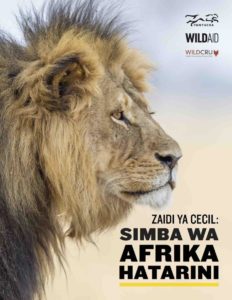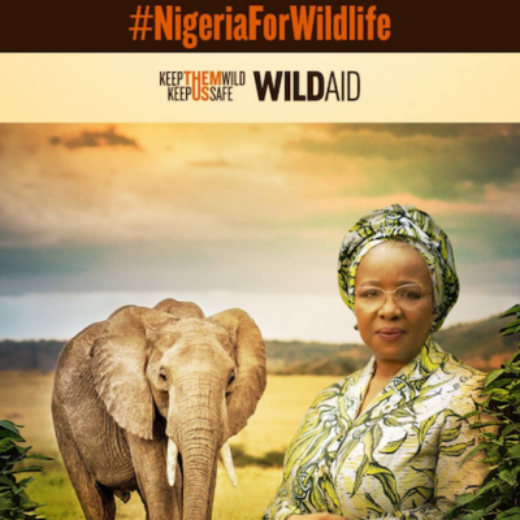
Over the past two decades, the African lion population has declined by an estimated 43%, with only 20,000 lions remaining across the entire continent. Habitat loss, poaching for bushmeat, and conflict with livestock owners are the primary killers of Africa’s lions today. Compared to trophy hunting, these threats combined are estimated to kill five to ten times as many lions each year.
The report “Beyond Cecil: Africa’s Lions in Crisis,” jointly published by Panthera and WildAid, with Oxford University’s WildCRU, exposes the gravest threats that place the African lion in an ever-tighter race against extinction, and outlines a roadmap to save the species.
The report calls for a greater global commitment to lions, with a focus on assisting African governments’ conservation efforts, empowering local communities to co-exist with lions, and preventing loss of lions’ prey species. To assist in addressing these threats in Tanzania and Kenya, a Swahili language translation of the report is now available.


With this Swahili version of the report, Panthera and WildAid continue to “Stand with Africa to Let Lions Live” at LetLionsLive.org.
“Human population growth and agricultural expansion restrict the lion’s range and bushmeat trade is stealing their prey, leading to increasing livestock loss and human conflict,” said WildAid CEO Peter Knights. “But with more resources for protection, there is still space and time to buck the trend and save Africa’s iconic lion.”
Lions occupy just 8% of their historical range today. Extensive habitat loss is likely to continue as Africa’s human population grows from 1.2 billion currently to 2.47 billion in 2050, as estimated by the United Nations.
Known as the silent killer, the illegal bushmeat trade has also emerged as one of the greatest threats to lions. Millions of wire snares litter the continent’s landscapes to catch wild animals for meat. These traps remove prey species and deliver torturous and unseen deaths for lions and other predators.
Years of civil strife across much of the continent has helped to fuel a preference for bushmeat. In rural markets, bushmeat is cheaper than domestic meats, yet conversely it commands high prices in cities thanks to its luxury cachet. Consumer demand is also rising in Asia for lion bones and other parts, replacing scarcely available tiger parts used in traditional Asian medicines.
Achievable solutions exist, but require a tremendous infusion of international support, including:
- Securing adequate funding for wildlife management and protected areas;
- Addressing human-wildlife conflict with local communities;
- Reforming the management of lion trophy hunting; and
- Reducing the demand for lion parts, such as bones and skins.
WildAid applauds today’s annoucement of the new Lion Recovery Fund, which aims to help expand habitat and protection for wild lions. Founded by Wildlife Conservation Network and the Leonardo DiCaprio Foundation, the fund will pursue the best collaborative investments and actions for the recovery of the wild lion population.
Stay in touch and get the latest WildAid updates.
SIGN UPAbout WildAid
WildAid is a non-profit organization with a mission to protect wildlife from illegal trade and other imminent threats. While most wildlife conservation groups focus on protecting animals from poaching, WildAid primarily works to reduce global consumption of wildlife products such as elephant ivory, rhino horn and shark fin soup. With an unrivaled portfolio of celebrity ambassadors and a global network of media partners, WildAid leverages more than $308 million in annual pro-bono media support with a simple message: When the Buying Stops, the Killing Can Too.
Journalists on deadline may email communications@wildaid.org


